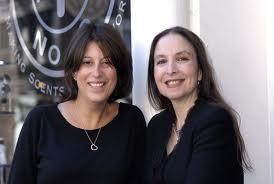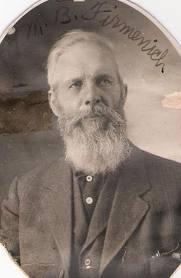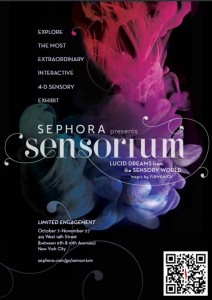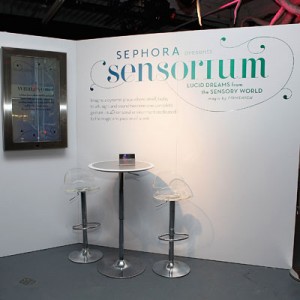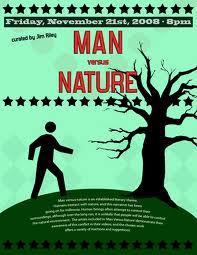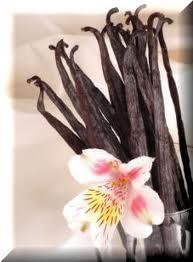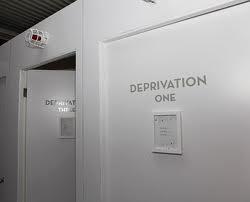This year, Team Karen [Karen Adams and Karen Dubin] decided to shake things up a bit.
Their planned ‘downtown day’- always on a Sunday [a Sunday, a Sunday] was enlivened by several new events which included a foray to the brand-new innovative multi-sensory interactive exhibit : The Sephora Sensorium, an ambitious collaboration with Firmenich.
[Firmenich – famed private Swiss perfume and flavor experts for over 100 years- is the largest privately-owned company of its kind in the business.]
I discovered this whimsical undertaking ensconced in the former Meatpacking District, in a post-industrially chic space on 414 West 14th Street, where it will be open to the public from October 7th – November 27th as a one-time limited engagement.
[I anticipate a repeat performance, somehow, at some future date]
The very young, hip, and enthusiastic Sephora staff were welcoming and full of energy; I believe that they enjoyed their rôle as spirit guides through the tangled Underworld of Olfactory Magic.
I would have liked- in an ideal world [“Say, Ida: how’s that Ideal World coming along, hmmm? “] –
To have been among those who helped prepare them.
As warm and exuberant as they were, a bit of extra information would have been helpful, I think.
Part I
The opening exhibit revolved around the subject of anosmia and the amygdala’s function in the formation of scent memory.
I thought that the visuals accompanying the topic were well done; it echoed my recent rants on this topic here at CaFleureBon 😉
Next in line was a very fun push-button wheel of scent, with pink pepper, vetiver, star anise, and moss.
I loved sniffing each one, and I’m afraid I just kept pushing those buttons to release more; fortunately, I had the joint to myself.
I think that this exhibit was meant to be a counterpoint to the subject of anosmia and memory, but it really wasn’t clear.
From here on, the exhibit ‘hall’ or wall, seemed to take on a more historical bent.
I admired the 1st Century Roman Woman, in all her perfumed glory: balsam and saffron for her tresses, rose and cardamom for her complexion, sweet almond and honey for her body- along with cinnamon and myrrh- and spikenard for her sandaled feet.
An ancient Roman recipe for perfumed wine ensues- conditum paradoxum.
The precious ingredients listed included cracked pepper, mastic, nard or laurel leaves, saffron, date stones crushed with mortar and pestle, honey, and wine.
Perfume bottle memorabilia showcased vintage beauties: Schiaparelli, Hattie Carnegie, Guerlain’s Liu and Coque d’Or, Patou’s Amour Amour, and many Lalique creations of exquisite beauty.
A vintage restroom perfume dispenser from the 50’s brought back fond memories of excusing oneself to spritz with abandon- re-emerging reeking like the proverbial Harlot by the Side of the Road 😉
This portion of the exhibit was concluded by The Osmphone – Firmenich’s invention which possesses the ability to exude 5 different fragrances at one’s fingertips.
The last issue to be debated was Man vs. Nature.
There seemed to be no guidance or instructions- so I sniffed all the materials that appeared sniffable.
The emphasis here was about being ecologically correct [with which I heartily agree, by the way] -citing the pillaging of Mysore sandalwood and the need to replace it with the Australian variety or molecules such as Firmenich’s Polysantols [they weren’t labeled, but it certainly smelled like it].
This was more credible than the ‘green vs. green’ display where one compared natural green to synthetic green molecules; there WAS no comparison, really.
Both were delightful, but it was very clear which one was the real deal.
Three vanillas [natural, displayed as the beans themselves under a sort of bell jar] were a subtle treat: each had their own characteristics.
Alas, it is difficult to maintain their potency, despite everything.
Tahitian felt most sweet and full-bodied, while the Madagascar vanilla seemed mellower.
The Mexican vanilla was deliciously smoky.
The last part of this preliminary exhibit displayed the details of glass-blowing and bottle creation, stunningly depicted.
Note : I found a certain lack of cohesiveness in this introductory wall.
While it was interesting and visually arresting, it felt a bit disjointed, which I felt was somewhat jarring [but maybe, it’s just me].
Part II
Anosmia, the Quiet Killer, aka the Invisible Disability
The Deprivation Chamber: Personal Firsthand Accounts of Anosmia
There are several chambers, all foam-padded and identical, equipped with headphones and cherry lollipops.
Heart-rending voices recount their ordeals –“humanity shrinks” says one plaintive voice,
“Life has tastes but no flavor; ice cream is cold and creamy, but nothing else.”
“I confess- I licked a dirty ashtray- and found that food and ashtray were much the same “, reflects another.
Depression and despair follow these afflicted folk; events are less colorful, empty-feeling.
One woman can’t remember smells, much as she tries; all she wants is to taste a cherry lollipop-
But all she experiences is “plastic acid “.[hence the request that one tastes the lollipop as they exit the booths].
Part III: Life at First Scent
We enter a darkened room, where an illuminated area indicates where to approach and sniff.
Sculptures and centerpieces are surrounded by projected corresponding images, light shows, and aromas…
The 6 am odors are clearly a vanilla/ maltol-type mix.
Spring is greenly floral; Bacon and Biscuits didn’t work at all [I hope they fixed
it !].
Summer Vacation was aquatic, ozonic, breezy, and very artificial-smelling; Weekend Splendor felt green and grassy, while Warm Embrace was a vanillic musky transparent amber.
[I thought that the visual aspect of this exhibit was more impressive than the fragrances used to depict them.]
I will conclude the second half of my findings in the next installment ! (Part 2 can be found here)
[Stay tuned.]
This is already a very hefty, hefty post 😉
–Ida Meister, Senior Editor

